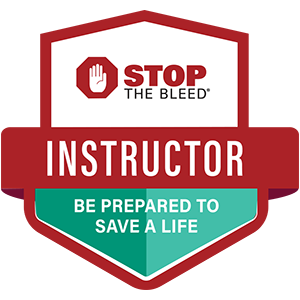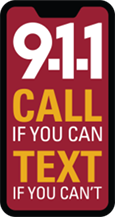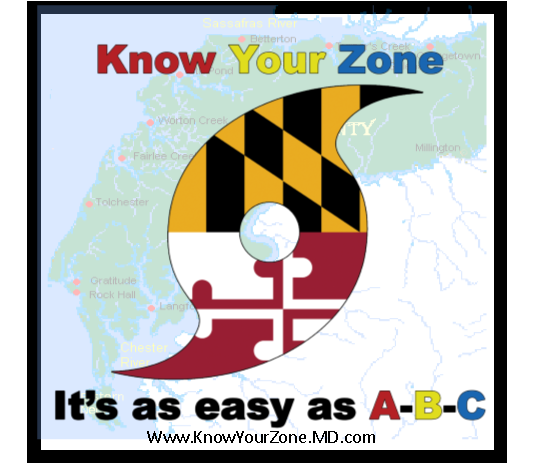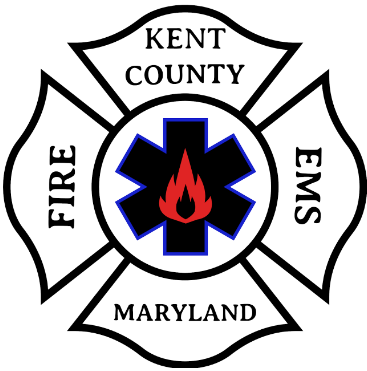Emergency Planning
Severe Thunderstorm | Hazardous Materials | Flash Flood |
The OES staff is responsible for the development and maintenance of the County Emergency Operations Plan. A copy of this plan is available for your review at the Kent County Office of Emergency Services located in the basement of the Detention Center Complex.
The OES is also responsible for staffing and operating the County's Emergency Operations Center (EOC). The EOC staff is the decision-making group during serious incidents or unusual weather events such as a hurricane or blizzard.
Federally evaluated drills take place routinely to test the effectiveness of the county's plans and procedures.
The Local Emergency Planning Committee (LEPC) plans for those areas relating to the safe storage, transportation, and utilization of hazardous materials as they apply to public safety. This committee meets regularly to bring private industry, local government, and citizens together in a partnership to discuss and plan for response to hazardous materials incidents in the best interest of the community.
Devastating acts, such as the terrorist attacks on the World Trade Center and the Pentagon, have left many concerned about the possibility of future incidents in the United States and their potential impact. They have raised uncertainty about what may happen next, increasing stress levels. We have listed things that you can do to prepare for the unexpected should another emergency arise.
1. Create an emergency communications plan with your family. Choose an out-of-town contact your family or household will call or e-mail to check on each other should a disaster occur and your family may be separated. Make sure every household member has that contact's e-mail address and phone numbers. You may want to make arrangements to stay with this out-of-town family member or friend if you are asked to evacuate. Be sure to include pets in these plans, since pets are not permitted in shelters and some hotels will not accept them
2. Post emergency numbers by telephones.
3. Establish a meeting place. Decide on a place for family members to meet if you are separated by disaster and cannot return home. In case of a sudden emergency, like a fire, select a second meeting place right outside your home. This will save time and minimize confusion in an emergency.
4. Assemble a disaster supplies kit. If you need to evacuate your home or are asked to "shelter-in-place," having some essential supplies on hand will make you and your family more comfortable. Prepare a disaster supplies kit in an easy-to-carry container such as a duffel bag or small plastic trash can. Include "special needs" items for any household member (infant formula or items for people with disabilities or older people), first aid supplies (including prescription medications), a change of clothing for each person, a sleeping bag or bedroll for each, a battery powered radio or television and extra batteries, non-perishable or canned food, a non-electric can opener and bottled water. Include some cash and copies of important family documents (birth certificates, passports and licenses) in your kit.
5. Find out about disaster plans at your workplace, your children's school or day care center and other places where your family spends time.
6. Display your house numbers in a location visible from the road upon which the address number is assigned. Refer to Guidelines for Displaying House Numbers.
- Outdoor fire sirens that sound for a three-minute steady tone
- Public address systems on fire, police or other emergency vehicles
- Radio and television
- Door-to-door sweeps by emergency service personnel
- Telephone fan-out to schools, major employers, hospitals, nursing homes, day care centers, etc.
- Use of "crawl" across the screens of television stations
8. If disaster strikes, immediately tune to Kent County's local emergency alert radio station WCTR (1530 AM) or WKHS (90.5 FM) and listen for emergency instructions. If disaster occurs near you, give first aid and get help for seriously injured people. If disaster occurs near your home while you are there, shut off damaged utilities, get everyone outside, secure your pets, and call your family contact. Check on your neighbors, especially those living alone, elderly or disabled.
- If advised to evacuate, stay calm and move to your predetermined meeting place or specified shelter as soon as possible. Lock your home and take your disaster supplies kit with you. Use travel routes specified by local authorities and post a note telling others when you left, your destination, the medical condition of family members and whether all family members are accounted for.
- If advised to shelter-in-place, stay calm and move to the basement or most central room in your home, business, or other facility. Close and lock all windows and doors, turn off all fans, heating, and air conditioning units. Listen to WCTR (1530 AM) or WKHS (90.5 FM) for emergency instructions.
Fires can happen suddenly and without warning.
- Plan two escape routes out of each room of your home.
- Practice fire drills regularly
- Teach family members to stay low to the ground when escaping from a fire.
- Teach family members never to open doors that are hot.
- Install smoke detectors on every level of your home. Clean and test them at least once a month.
- Change batteries at least once a year.
- Keep a whistle in each bedroom to awaken household in case of fire.
- Check electrical outlets. Do not overload outlets.
- Purchase and learn how to use a fire extinguisher.
- Have a collapsible ladder on each upper floor of your house.
If you are caught in a winter storm, do the following:
- If you are outside, find a shelter and stay dry. Cover all exposed parts of the body.
- If there is no shelter, prepare a lean-to, windbreak or snow cave for protection from the wind. Build a fire for heat and to attract attention. Place rocks around the fire to absorb and reflect heat.
- Do not eat snow. It will lower your body temperature. Melt it first.
- If you are in a car or truck, stay there. Run the motor about ten minutes each hour for heat. Open the window a little for fresh air to avoid carbon monoxide poisoning and make sure the exhaust pipe is not blocked. Make yourself visible to rescuers by turning on the dome light at night when running the engine. Tie a colored cloth (preferably red) to your antenna or door. Raise the hood indicating trouble after snow stops falling. Exercise from time to time by vigorously moving arms, legs, fingers, and toes to keep blood circulating and to keep warm.
- If you are at home or in a building, stay inside. When using alternative heat from a fireplace, wood, stove, space heater, etc., use fire safeguards and properly ventilate. If there is no heat, close off unneeded rooms, stuff towels or rags in cracks under doors, and cover windows at night. Eat and drink food and wear layers of loose-fitting, lightweight, warm clothing.
If a hurricane is expected within 24 hours, begin precautionary action at once.
- Listen for weather updates and stay informed.
- Keep portable radio and flashlight on hand with extra batteries.
- Clear your yard of all loose objects.
- Moor your boat securely
- Store drinking water in clean containers
- If advised, shutter, board or tape windows.
- Plan a flood free evacuation route, and know where to go.
- If ordered to evacuate, obey immediately and take your family disaster supplies kit with you. Let your
out-of-town contact know where you are going.
Tornado Safety Tips
Stay alert to severe thunderstorms with strong, gusty winds, a dark column or "funnel" spinning from sky to ground, and a loud, roaring noise similar to a freight train. If a tornado has been sighted, seek shelter immediately.
- If you are at home, go to a basement or room nearest the center of the house.
- If you are in a public building, move to the interior of the building, preferably a stairwell or hallway.
- If you are in your car, stop, get out and lie flat in a low area while covering your head.
- Do not stay in a mobile home, try to outrun the tornado on foot or in your car
- Do not open windows
- Listen to your local radio emergency alert stations and TV stations for updated storm information.
- Know what a tornado Watch and Warning means: A tornado watch means a tornado is possible in your area. A tornado warning means a tornado has been sighted and may be headed for your area. Go to safety immediately.
- Watch out for fallen power lines and stay out of the damaged area.
- Use a flashlight to inspect your home for damage.
Terrorism Safety Tips
Be vigilant of your surroundings at all times. Be aware of suspicious persons or activities, public disputes and confrontations and report them to the proper authorities by calling 9-1-1.
- Carry a photo ID showing your blood type and any special medical conditions.
- Do not unnecessarily divulge your home address, phone number, or family information.
- Increase security and awareness at public facilities.
- Be alert to vehicles left unattended.
- Be aware of unattended packages, briefcases and other suspicious looking objects, including delivery procedures.
- Be alert to letters and parcels that may be dangerous and should be treated with care.
- Be aware of your surrounding, including emergency exits, at large gatherings, sporting events, or conferences.
Thunderstorms occur in all 50 states and U.S. territories. Thunderstorms are intense local storms averaging 20 miles across and reaching as high as 10 miles. They are always accompanied by lightning.
- Keep an eye on the sky. Look for darkening skies, flashes of light, or increasing wind. Listen for the sound of thunder.
- If you can hear thunder, you are close enough to the storm to be struck by lightning. Go to safe shelter immediately!
- Listen to NOAA Weather Radio, commercial radio, or television for the latest weather forecast.
- Find shelter in a building or car.
- Avoid using the telephone or any electrical appliances.
- Avoid taking a bath or shower, or running water for any other purpose.
- Turn off the air conditioner. Power surges from lightning can overload the compressor, resulting in a costly repair job.
- Pick a safe place to be in your home away from windows, skylights, or glass doors in case of a tornado.
- Draw blinds and shades over windows to prevent broken glass from blowing into your home.
- If you are in the woods, take shelter under the shorter trees.
- If you are boating or swimming, get to land and find shelter immediately.
- If you are outside and there is no available shelter, go to a low-lying place away from trees, poles or metal objects. Squat low to the ground and place your hands on your knees with your head between them. Make yourself the smallest target possible.
- If someone is struck by lightning, call 9-1-1 for help and administer first aid.
The following prescribes actions to be taken in the event of a hazardous materials accident:
- If you are told to shelter in-place, go inside if you are outdoors.
- Close all windows and doors and tape cracks for extra protection.
- Close all vents on cooling, heating or ventilation systems.
- Move to central interior of building and stay inside until you are told that the emergency is over.
- If you are told to evacuate, immediately move to a location designated by public officials when so directed.
- Gather your Disaster Supplies Kit.
- Do not go to your children's school. School officials will take special care of your children in accordance with school plans.
- Leave sign on door saying house has been evacuated.
Prolonged rainfall over several days can cause a river or stream to overflow and flood the surrounding area. A flash flood from a broken dam or levee or after intense rainfall of one inch or more per hour often catches people unprepared. Even a shallow depth of fast moving floodwater produces more force than most people imagine. The most dangerous thing you can do is to try walking, swimming, or driving through such swift water. Still, you can take steps to prepare for these types of emergencies.
- If you live in a flood area, make sure you have flood insurance.
- Write instructions on how and when to turn off your utilities, electricity, gas, and water.
- If it has been raining hard for several hours, or steadily raining for several days, be alert to the possibility of a flood.
- Listen to local radio or TV for flood information
- If driving, be aware that the roadbed may not be intact under flood waters. Turn around and go another way. NEVER drive through flooded roadways.
- When a flash flood warning is issued, move to higher ground away from rivers, streams, creeks, and storm drains. Do not drive around barricades.
- If your car stalls in rapidly rising waters, abandon it immediately and climb to higher ground.










